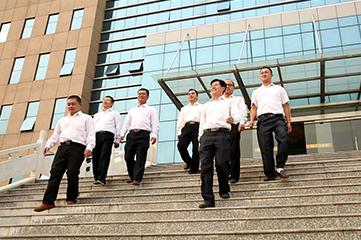reciprocating grate boiler
Understanding Reciprocating Grate Boilers A Comprehensive Overview
Reciprocating grate boilers represent an important technology in the realm of industrial and utility-scale steam generation. Known for their versatility and efficiency, these boilers utilize a moving grate mechanism to facilitate the combustion of solid fuels, such as biomass, coal, and various waste materials. This article delves into the design, operational mechanisms, advantages, and applications of reciprocating grate boilers.
Design and Mechanism
At the heart of a reciprocating grate boiler is its unique grate design, which is composed of a series of bars mounted on a frame. This grate is capable of moving back and forth, which allows for efficient fuel bed management. The oscillating motion serves multiple purposes it promotes thorough mixing of the fuel, enhances combustion efficiency, and aids in the removal of ash from the combustion chamber.
The fuel is fed onto the grate either manually or through automated systems. As the grate reciprocates, fuel is moved towards the combustion chamber, where it is subjected to high temperatures. This mechanism optimizes the air-fuel contact and ensures that combustion occurs uniformly across the entire surface of the fuel bed. Additionally, as the grate moves, the resultant ash is conveyed to the rear of the furnace for collection, minimizing the need for manual intervention and reducing downtime for maintenance.
Combustion Process
The combustion process in a reciprocating grate boiler consists of several key phases, starting from ignition to complete combustion
. Upon reaching the heat zone, the fuel undergoes pyrolysis, which is the thermal decomposition of organic material at elevated temperatures. As the volatile gases are released, they ignite and combust in the presence of air introduced from below the grate.To further enhance efficiency, the boiler is designed for optimal air distribution, allowing preheated air to enter from beneath the grate, promoting better combustion characteristics. The ability to control the airflow and the movement of the grate allows operators to adapt to varying fuel types and moisture content, making these boilers suitable for a wide range of fuels.
Advantages of Reciprocating Grate Boilers
reciprocating grate boiler

1. Fuel Flexibility One of the standout features of reciprocating grate boilers is their capability to burn a variety of solid fuels. This flexibility is particularly valuable for industries that generate biomass waste or for power plants that utilize lower-cost alternative fuels, contributing to cost savings and sustainability.
2. High Efficiency The design of the moving grate contributes to efficient heat transfer and combustion, enabling these boilers to achieve high operational efficiencies. Enhanced combustion conditions reduce unburned carbon and emissions, thereby minimizing the environmental impact.
3. Reduced Emissions Modern reciprocating grate boilers are equipped with advanced emissions control technologies that allow for the reduction of particulate matter and SOx and NOx emissions. This makes them compliant with stringent environmental regulations.
4. Robust Design Built to endure harsh operational conditions, reciprocating grate boilers are often favored for their durability and reliability. The mechanical nature of the grate reduces reliance on electro-mechanical systems, which can be prone to failures, thereby improving overall uptime.
Applications
Reciprocating grate boilers find extensive use in various applications, particularly in industries such as pulp and paper, food processing, and waste management. Their ability to efficiently convert solid waste into energy makes them an attractive choice for waste-to-energy facilities. Additionally, these boilers are commonly employed in combined heat and power (CHP) plants, where the recovered thermal energy can be used for district heating or industrial processes.
Conclusion
In summary, reciprocating grate boilers exemplify an effective solution for energy production from solid fuels. With their robust design, high efficiency, and versatility, they play a pivotal role in modern industries seeking sustainable energy solutions. As global demand for renewable energy sources increases, the significance of technologies like reciprocating grate boilers will only continue to grow, emphasizing the importance of efficient waste management and biomass utilization in the quest for a cleaner, more sustainable future.
-
Top Electric Steam Boiler Manufacturers - High Efficiency SolutionsNewsJul.30,2025
-
Top Electric Steam Boiler Manufacturers – Efficient Industrial SolutionsNewsJul.29,2025
-
Top Electric Steam Boiler Manufacturers | Reliable Industrial SolutionsNewsJul.29,2025
-
OEM Steam Boiler Solutions for Custom Needs | High Efficiency & VersatilityNewsJul.29,2025
-
High-Efficiency Thermal Oil Boiler for Industrial Heating SolutionsNewsJul.29,2025
-
Top Electric Steam Boiler Manufacturers for Industrial EfficiencyNewsJul.28,2025

